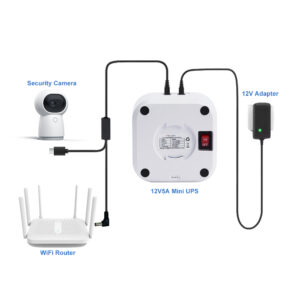Lithium polymer (LiPo) battery technology has evolved significantly over the past few decades and has become the preferred solution for many industries due to its high energy density, lightweight design, and form factor flexibility. As the demand for more efficient, longer-lasting, and safer batteries continues to grow, the future of LiPo battery technology holds great potential. This article explores the future of LiPo battery technology by examining key areas such as material innovation, battery structure optimization, and faster charging solutions.

- Current Status of Li-Polymer Battery Technology
Before diving into the future, it is important to understand the current status of Li-Polymer battery technology. Li-Polymer batteries use polymer electrolytes instead of liquid electrolytes and are known for their high energy density, thinness, and flexibility. These properties make Li-Polymer batteries ideal for a variety of applications ranging from consumer electronics such as smartphones and laptops to drones, electric vehicles (EVs), and power tools.
While Li-Polymer battery technology has achieved significant advances in energy storage and efficiency, the market is demanding even higher performance, with a particular focus on improving energy density, charging time, safety features, and battery life.
- Materials Innovation for Li-Polymer Batteries
One of the most exciting areas of development in LiPo battery technology is materials innovation. Researchers are continually exploring new materials that can improve the efficiency, safety, and performance of Li-Po batteries. Some key areas of materials innovation include:
Solid-state electrolytes
A major area of focus for the future of LiPo battery technology is the development of solid-state batteries, which use solid electrolytes instead of liquid electrolytes. Solid electrolytes offer several advantages over liquid electrolytes, including improved safety (as they are less likely to leak or catch fire) and better energy density. Solid-state electrolytes have the potential to replace flammable liquid electrolytes in traditional Li-Po battery designs, making Li-Po battery technology safer and more efficient.
Materials such as lithium sulfide, lithium phosphate, and even ceramics are being explored for use as solid electrolytes. Solid-state Li-Po battery technology has the potential to enable batteries to last longer, charge faster, and perform better in extreme temperatures.
Silicon Anodes
Another promising area of materials innovation is the use of silicon-based anodes. Traditional lithium-ion batteries, including Li-Po battery packs, use graphite anodes. However, silicon has a higher ability to store lithium ions, which means it can theoretically offer a much higher energy density than graphite. Silicon anodes can also enable faster charging times, a key improvement in consumer demand.
However, silicon anodes also face challenges, particularly their ability to maintain stability during charging cycles. As silicon expands and contracts during charging, it can cause the battery to degrade more quickly. Researchers are investigating ways to enhance the structural integrity of silicon anodes to enable long-term use in lithium polymer battery packs.
Graphene
Graphene, a single layer of carbon atoms arranged in a hexagonal lattice, is another material being investigated for enhancing the performance of lithium polymer batteries. Its high conductivity, light weight and flexibility make it ideal for improving the efficiency of lithium polymer batteries. Using graphene in lithium polymer battery electrodes can enable batteries with significantly higher charge and discharge rates, longer lifespans and greater thermal stability.
Graphene-based lithium polymer battery technology has the potential to revolutionize the way we use energy storage in everything from consumer electronics to electric vehicles, offering faster charging times and greater energy output.

- Battery structure optimization
In addition to material innovation, structural changes in lithium polymer battery packs may also lead to improved performance. Innovations in cell, module and battery pack design can improve the overall energy density, durability and safety of lithium polymer batteries.
3D battery structure
The development of 3D battery structure is an emerging trend. In traditional lithium polymer battery packs, energy storage is limited to flat two-dimensional designs. However, researchers are exploring ways to build 3D battery structures to better maximize the space available for energy storage. This may lead to a significant increase in the energy capacity of lithium polymer battery packs without adding additional weight or size.
For example, 3D architectures can allow the use of multiple layers of electrodes and electrolytes, which will increase the overall storage capacity. This is particularly beneficial for applications where space and weight are at a premium, such as drones and electric vehicles.
Flexible and foldable designs
The future of lithium polymer battery technology may also see more flexible and foldable designs, thanks to advances in polymer materials and packaging technology. These flexible batteries are particularly useful for applications in wearable devices, foldable smartphones, and other devices that focus on flexibility and space.
Flexible lithium polymer batteries can also improve integration with curved or unconventional device shapes, opening up new design possibilities for consumer electronics. This could lead to devices that are thinner and lighter, but still provide the high performance that users expect.
Integrated Battery Systems
The concept of integrated battery systems is another potential future development for lithium polymer battery technology. In this approach, the battery itself is integrated into the structure of the device, such as within the frame or body of a drone or electric vehicle. This would reduce the overall weight and size of the device, while also potentially improving the safety and performance of the battery.
For example, instead of using a removable lithium polymer battery pack, an electric vehicle could have the battery embedded directly into the chassis of the vehicle. This would not only increase the energy density of the vehicle, but also improve its safety by reducing the risks associated with separate battery modules.
- Safety and Durability Improvements
As Li-polymer battery technology is increasingly used in high-power applications, safety remains a top priority for further development. While Li-polymer batteries are already considered relatively safe, improved safety mechanisms are needed in the future to prevent accidents such as overheating, leakage, or explosion.
Advanced Battery Management System (BMS)
Developing more advanced battery management systems (BMS) is critical to improving the safety of Li-polymer battery technology. A powerful BMS can monitor a variety of parameters, including temperature, voltage, and current, and make adjustments in real time to prevent overheating or overcharging. Advances in BMS are critical to future Li-polymer battery applications, especially in autonomous vehicles, drones, and large energy storage systems.
Enhanced Thermal Management
One of the challenges of Li-polymer battery technology is heat management. When batteries are discharged and charged, they generate heat, which can reduce their performance and lifespan. Future Li-polymer battery technology may feature improved thermal management systems that can more effectively dissipate heat and keep the battery at an optimal temperature for performance and lifespan.

Conclusion
The future of LiPo battery technology is bright, with a plethora of developments on the horizon that will improve energy density, charging speeds, safety, and overall performance. Innovations in materials such as solid-state electrolytes, silicon anodes, and graphene, as well as structural changes such as 3D and flexible designs, are likely to redefine what is possible with Li-Po batteries. As demand for faster charging times and safer, longer-lasting batteries continues to grow, Li-Po battery technology will remain a cornerstone of modern energy storage solutions. Advances in this field will shape industries such as consumer electronics, electric vehicles, drones, medical devices, and more, ensuring that Li-Po batteries play a key role in powering the future.





